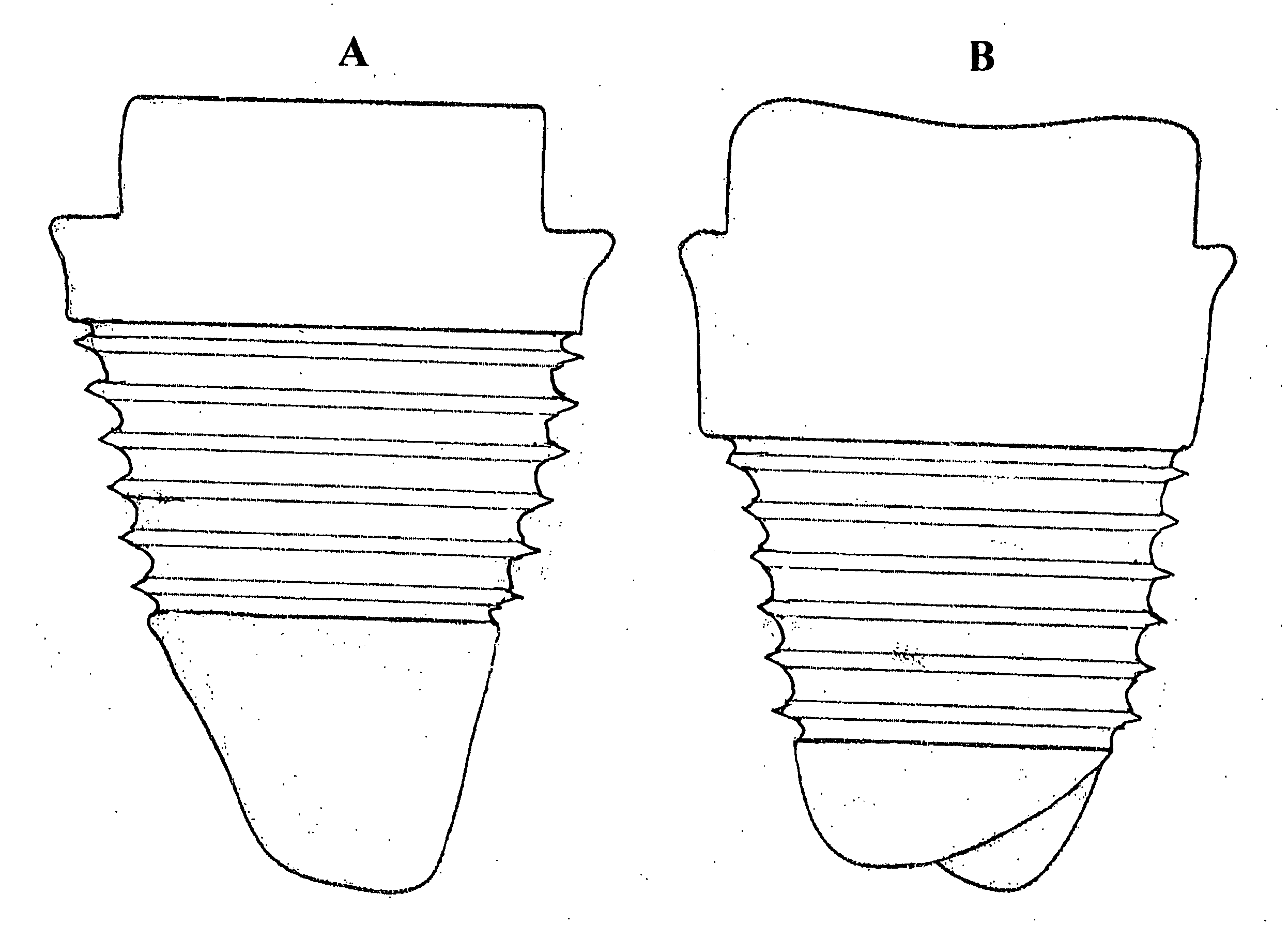Individualized endosseous dental implant
- Summary
- Abstract
- Description
- Claims
- Application Information
AI Technical Summary
Benefits of technology
Problems solved by technology
Method used
Image
Examples
Embodiment Construction
[0023]The premolar implant as viewed on the left side in FIG. 3 consists of a custom built abutment on the coronal end (1), to which a dental prosthesis is attached after sufficient healing has occurred (approximately three months); there are user-defined circumferential rings cut into the implant body and root area (2), which may or may not extend beyond the natural tooth side boundaries, additionally, the outer edges of these rings may be square, rounded, or triangular as indicated. The premolar apical end (3), is shaped to fit back into the existing extracted tooth root socket of the patient's mandible or maxilla, following the natural route of the extracted tooth.
[0024]The molar implant as viewed on the right side of FIG. 3B, consists of a custom built abutment on the coronal end (1), to which a dental prosthesis is attached after sufficient healing has occurred (approximately three months);[0025]There are user-defined circumferential rings cut into the implant body and root are...
PUM
 Login to View More
Login to View More Abstract
Description
Claims
Application Information
 Login to View More
Login to View More - R&D
- Intellectual Property
- Life Sciences
- Materials
- Tech Scout
- Unparalleled Data Quality
- Higher Quality Content
- 60% Fewer Hallucinations
Browse by: Latest US Patents, China's latest patents, Technical Efficacy Thesaurus, Application Domain, Technology Topic, Popular Technical Reports.
© 2025 PatSnap. All rights reserved.Legal|Privacy policy|Modern Slavery Act Transparency Statement|Sitemap|About US| Contact US: help@patsnap.com



